| Home | Nature Weekly Index |
11 January 2015 | Wild Visitors |
On the second day of New Year, I welcomed my first ad-hoc wild visitor, a moth that goes by the name Eudocima fullonia (Fruit-piercing Moth). It was a mid-size moth with a length of about 6 centimetres. The moth arrived while I was doing my routine plant watering in the early morning before going to work. It had 2 ear-liked structure on top of its head when it fully closed up its wings. I was fortunate to snap a picture of its hindwings which were usually hidden. The yellow-and black pattern on hindwings was the key feature that led to its identification.
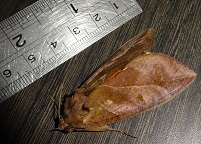
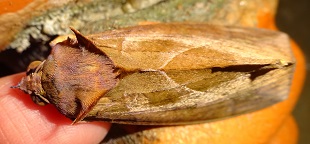

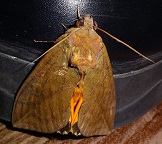
On the same day, but during the late hour in the evening, the second wild visitor of the year came by. It was a Rose Beetle (Adoretus compressus).
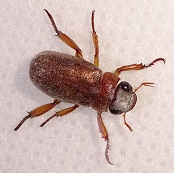 Except for the pictures of the beetle, there is not much detailed background information on this beetle in the Internet. From an
article published in the Journal of Insect
Science in 2011, I can probably infer that there are at least 2 Adoretus species available in Singapore, namely
Adoretus compressus and Adoretus sinicus. There is a table in the article that list the host plants of the
Adoretus species. For Adoretus compressus, only one host plant (Lychee; Litchi chinensis) was indicated. As for
Adoretus sinicus, it feeds on over 250 species of plants. However,
other report had listed Adoretus compressus as polyphagous
(i.e. feed on plants belonging to different families).
Except for the pictures of the beetle, there is not much detailed background information on this beetle in the Internet. From an
article published in the Journal of Insect
Science in 2011, I can probably infer that there are at least 2 Adoretus species available in Singapore, namely
Adoretus compressus and Adoretus sinicus. There is a table in the article that list the host plants of the
Adoretus species. For Adoretus compressus, only one host plant (Lychee; Litchi chinensis) was indicated. As for
Adoretus sinicus, it feeds on over 250 species of plants. However,
other report had listed Adoretus compressus as polyphagous
(i.e. feed on plants belonging to different families).
Based on the pictures that I saw, both species look quite similar and I was not able to find any information that distinguish between the two. Since similar pictures found locally has named this beetle as Adoretus compressus, I had kept to this name for now.
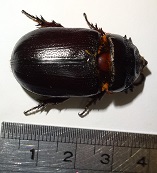

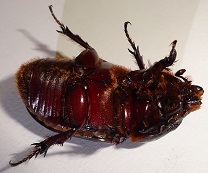 Two days back, another beetle come by. This one was rather rare in term of its size, around 4 cm long. I do not normally get beetle
of this size to drop by. Even when I went around the wild, I rarely seen one of this size. It was lying on its back just outside
the main entrance to my home in the late evening and was not moving. I thought it was dead. When I brought it into the house to take
pictures, its thorny legs gripped onto my fingers --- it was alive. But, it did not struggle or make any attempt to move away.
Two days back, another beetle come by. This one was rather rare in term of its size, around 4 cm long. I do not normally get beetle
of this size to drop by. Even when I went around the wild, I rarely seen one of this size. It was lying on its back just outside
the main entrance to my home in the late evening and was not moving. I thought it was dead. When I brought it into the house to take
pictures, its thorny legs gripped onto my fingers --- it was alive. But, it did not struggle or make any attempt to move away.
After that, I placed it in one of my one of my pots for the night, hoping that it will find its way back to where it came from by the morning. By morning, it was gone. In the pot, I noticed a pile of newly dug soil, which made me wonder whether it was the work of the beetle. This may be a Scarab Beetle (family: Scarabaeidae).
A previous post on wild visitors to my home: | 15 June 2014 |